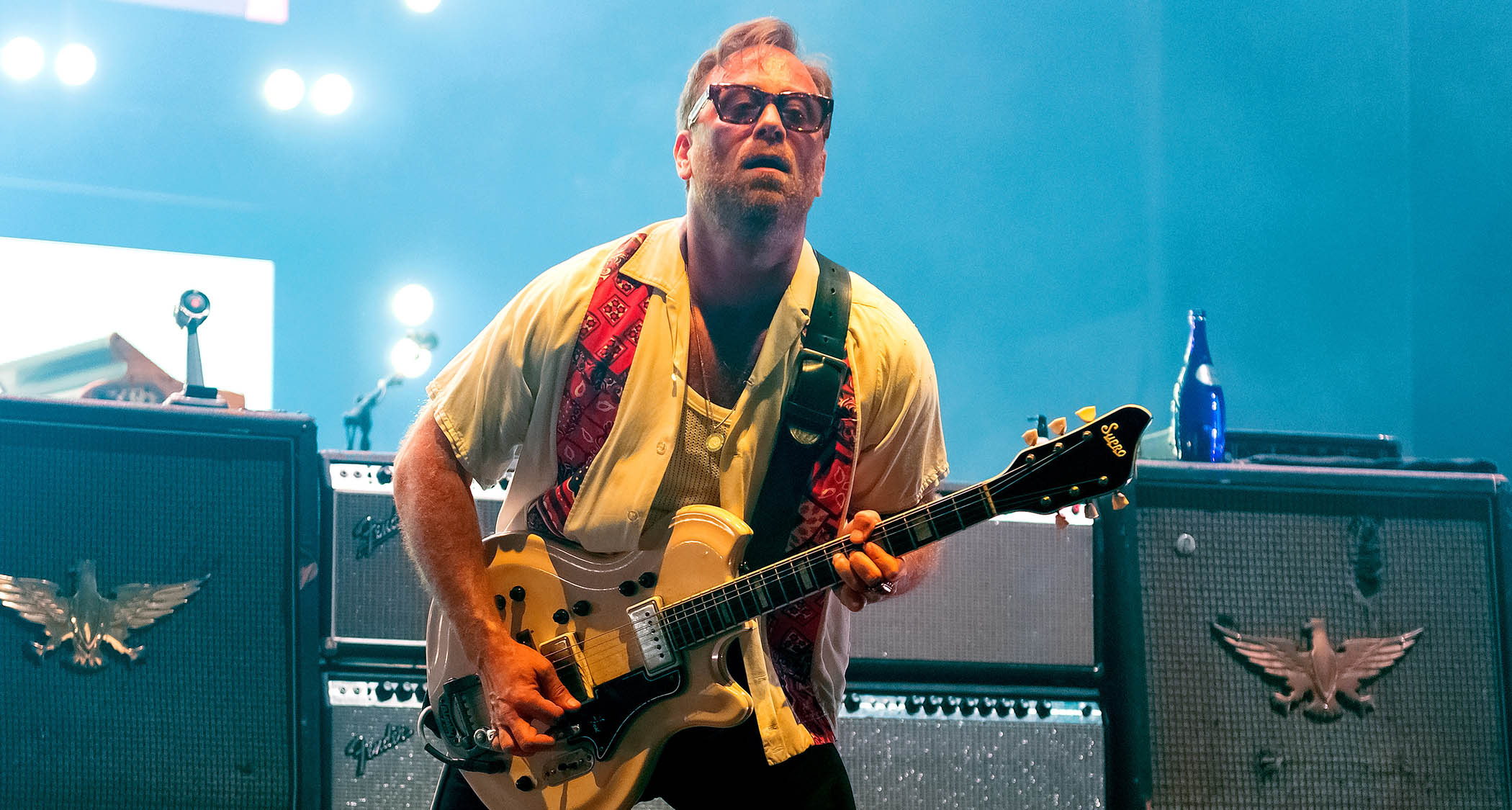Dan Auerbach is one of Ohio’s greatest guitar players, bringing blues roots to the mainstream with a major-league soloing and riffing style
This video lesson unpacks Auerbach’s rhythm and lead approaches – and mastering it could put gold on your ceiling

The Black Keys were formed in Ohio, USA in 2001 by the duo of Dan Auerbach on guitar and vocals, and drummer Patrick Carney. They came to prominence during the era that alternative acts such as The White Stripes were popular, and also paved the way a few years later for acts like Royal Blood.
These were minimalist groups where for the most part two band members took care of guitars, drums and vocals and often bass guitar was played either using octave pedals, or sometimes by a session bass player, particularly in a live setting.
Auerbach and Carney were influenced in their formative years by blues artists such as Muddy Waters and RL Burnside as well as bands like The Beatles. Patrick Carney’s uncle Ralph played saxophone as a session player on several Tom Waits albums.
The Black Keys formed as a duo, when the rest of the scheduled musicians didn’t show up for a session in the early 2000s. They recorded a demo that consisted of covers and improvised songs. They began to tour and record, playing anywhere they could get a gig and their hard work started to pay off when they played a set at the SXSW festival.
They were offered £200,000 to license one of their songs for a TV advert, but turned the offer down, fearing that they would be seen as selling out and not taken seriously as artists. After a lot of hard work on the touring circuit, as well as recording several albums’ worth of original material, the band began to get exposure on American TV, as well as playing Reading and Leeds festivals.
Towards the end of the noughties they scored an MTV video of the year award and were also able to work in the studio with high-profile producers and engineers, including Tchad Blake and Danger Mouse.
After much further critical and commercial success, the band went on a temporary hiatus in 2013, before returning in 2019 with a covers album. They continue to record and tour in 2024.
Our track is built on a classic riff in the key of E minor (E-F#-G-A-B-C-D), but the piece actually utilises the C# note instead of C natural, which means that the A chords are all A major (A-C#-E). This gives the overall tonality of the track an E Dorian flavour (E-F#-G-A-B-C#-D), and this provides more of a blues sound as opposed to the typical Minor tonality that you’d expect with this key signature.
The solo is primarily built on the E minor pentatonic scale (E-G-A-B-D) and is aimed at utilising melody and soundscapes over technique, in terms of importance. There is no rhythm guitar part under the solo, mainly because with the low octave harmony line it’s not necessary to further overcrowd the frequencies with extra guitar parts.
Have a look at the video to see the specific playing articulations, and aim to play the parts with good timing and accuracy.
Get the tone
Amp Settings: Gain 7, Bass 6, Middle 6, Treble 7, Reverb 4
Dan Auerbach uses both classic and oddball electric guitars such as Gibson, Harmony and Guild. It’s sonically more Gibson than Fender, but if you are using single-coil pickups just roll the brightness down a little bit. There’s an aggressive fuzz tone on the track, as well as a Plex-style Marshall amp tone. You’ll also want to add a good amount of reverb and delay.
Video and tab
Performance notes
Rhythm
The rhythm guitar part is not difficult to execute but needs to be played with some controlled aggression in terms of both chords and single-note lines. For the double-stop chords in bars 17-24 you will need to focus on your timing, primarily to avoid rushing ahead.
Lead
The solo has some aggressive string bends and vibrato, and is all about the tone and the way the notes are attacked. This isn’t the time for politeness, and the fuzz-toned percussive notes and string noises in the rhythm and particularly the lead part are very important as far as the overall effect of the piece is concerned.
Get The Pick Newsletter
All the latest guitar news, interviews, lessons, reviews, deals and more, direct to your inbox!
“There are so many sounds to be discovered when you get away from using a pick”: Jared James Nichols shows you how to add “snap, crackle and pop” to your playing with banjo rolls and string snaps
How to find new approaches to blues soloing – using fingerstyle improv ideas and Roy Buchanan-inspired licks








![Joe Bonamassa [left] wears a deep blue suit and polka-dotted shirt and plays his green refin Strat; the late Irish blues legend Rory Gallagher [right] screams and inflicts some punishment on his heavily worn number one Stratocaster.](https://cdn.mos.cms.futurecdn.net/cw28h7UBcTVfTLs7p7eiLe.jpg)


